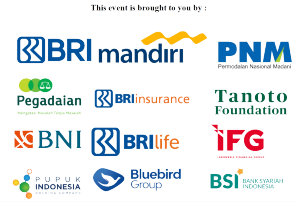Day 5th
GNW MM FEB UI

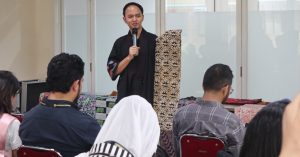
On the final day of GNAM, a Batik Painting workshop was held by Batik Geulis Handayani at Universitas Indonesia, Salemba Campus. The event began with an opening session led by a speaker from Batik Geulis, Giorgino Marsello who also an alumni of University of Indonesia. He begin with introducing the batik motifs that would be created during the workshop. These motifs included various elements such as the kujang, leaves, and other traditional patterns. The speaker engaged with the participants through a question-and-answer session, where attendees were encouraged to guess the images embedded within the fabric. This interactive approach helped participants familiarize themselves with the designs they would be working on.
Following this introduction, the speaker presented the tools that would be used in the batik-making process. One of the key tools highlighted was the canting, a traditional instrument used to apply hot wax onto fabric. The speaker demonstrated the correct way to use the canting, emphasizing how to control the flow of wax to prevent any accidental spills that could disrupt the batik-making process.

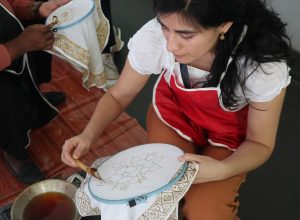
During the workshop, the speaker explained the two primary methods of batik-making: batik tulis (hand-drawn batik) and batik cap (stamped batik). The participants were informed that they would be trying their hand at both techniques, starting with the hand-drawn method and then incorporating stamped designs into their work.

The participants were then divided into several groups, each given the opportunity to engage directly in the batik-making process. They began by carefully drawing patterns on the fabric using the canting, ensuring that their designs took shape with precision. Once the outlines were completed, they moved on to the coloring stage, where they applied vibrant dyes to bring their motifs to life. The motifs created by the participants varied, with some depicting animals while others chose floral designs.
After completing the coloring process, the participants set their batik pieces out to dry. Once dried, the artworks would serve as unique souvenirs for the participants to take back to their respective countries, marking a memorable experience from their time at the workshop.
Many participants expressed their excitement and enjoyment in taking part in the batik painting activity. They found the workshop to be an enriching experience that allowed them to learn about a significant aspect of Indonesian culture while also engaging in a hands-on creative endeavor. The opportunity to try a traditional craft and create their own batik pieces was met with enthusiasm, making the final day of GNAM a truly special and unforgettable event.
Group Presentation, Winner Announcement, and Closing Ceremony
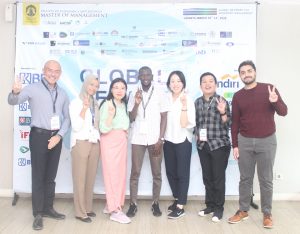
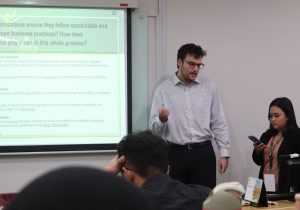
The final day of GNAM Week was a culmination of intense discussions, insightful presentations, and heartfelt reflections. The day commenced with the much-anticipated Group Presentation session from 16:00 to 17:00, where participants showcased their research and collaborative efforts. Four distinguished judges—Dr. Arviansyah, Dr. Jonathan Marpaung, Dr. Lukman Hanif Arbi, and M.Sc. Yeshika Alversia—provided their expertise in evaluating the teams. The presentations reflected the dedication and intellectual rigor of the participants, who had engaged in three hours of intense discussions earlier in the day. The groups were divided into two categories: Groups 1-4 and Groups 5-8, ensuring a fair and structured competition.
Following the presentations, the judges convened for a brief deliberation session from 17:00 to 17:15 to determine the winners. Their decision set the stage for the much-awaited Closing Ceremony, which began promptly at 17:15. The event was hosted by MC Thomas, who guided the proceedings with enthusiasm and professionalism.
One of the highlights of the ceremony was the testimonials from participants, reflecting on their experiences throughout the week. Shan, a student from UBC, shared how the event exceeded her expectations, particularly regarding the quality of the seminar speakers and the hospitality of the organizing staff. However, she noted that efforts should be made to reduce the use of disposable plastics. Tayeb, a Yale student, appreciated the warm welcome and invaluable networking opportunities, describing the program as eye-opening. His only minor criticism was related to dinner arrangements. Lastly, an MM student expressed gratitude toward the faculty for organizing such a well-structured and enriching event.
The moment everyone had been waiting for—the Awards Ceremony—followed. The winners were recognized as follows:
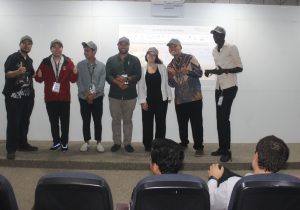
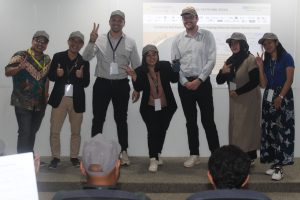
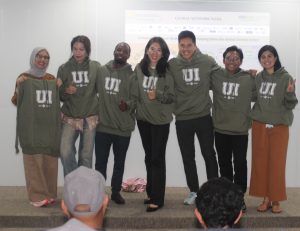
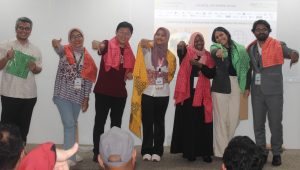
- 3rd Place: Group 4 and Group 8 (each received hats, presented by Dr. Lukman and Dr. Jo)
- 2nd Place: Group 1 (awarded hoodies, presented by M.Sc. Yeshika)
- 1st Place: Group 7 (received batik, presented by Dr. Arviansyah)
As the event neared its conclusion, Ibu Rofikah delivered a pre-recorded closing speech, thanking all participating schools and emphasizing the hope that each participant had gained valuable knowledge. This was followed by final remarks from Dr. Jonathan, who encouraged participants to continue networking and spreading awareness of GNAM Week. Dr. Lukman further emphasized the importance of fostering relationships, reminding everyone that in an increasingly interconnected world, efforts must be made to nurture and sustain these connections.
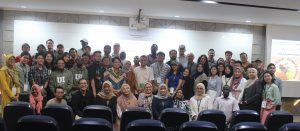
Before parting ways, participants were asked to fill out a survey and gathered for a final group photo, capturing the camaraderie and spirit of the event. The day concluded with a communal iftar (buka puasa) from 18:00 to 19:00, allowing participants to share a meal together and reflect on the meaningful experiences they had gained throughout the week.
With knowledge exchanged, friendships formed, and memories made, the final day of GNAM Week was a fitting end to a truly transformative experience.
